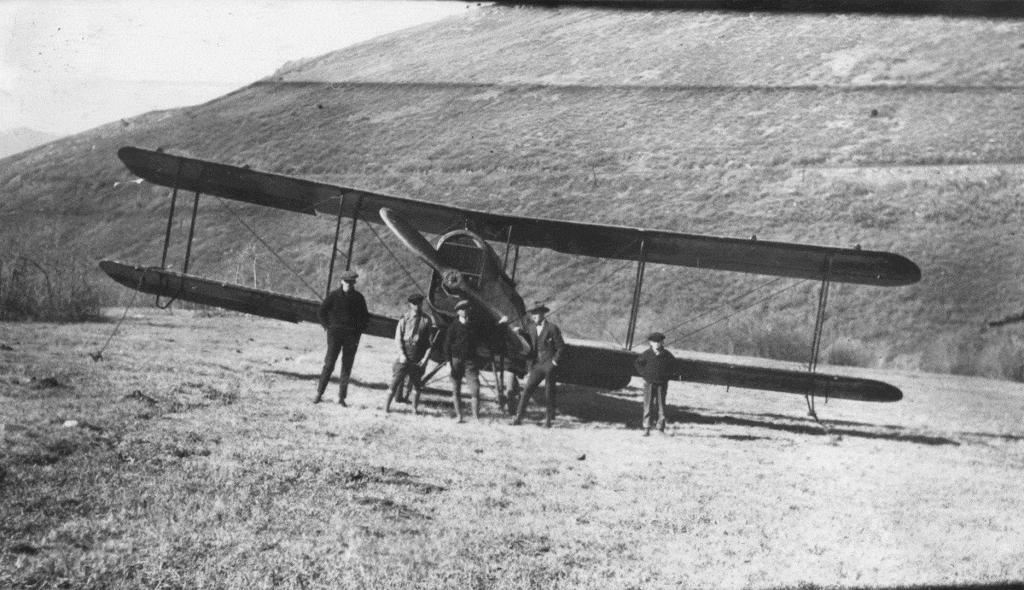Air travel throughout the United States today is so ubiquitous it’s taken for granted. On a personal note, I didn’t consciously notice the common sights and sounds of jet planes in our skies until after the September 11, 2001 attacks, when all domestic flights were grounded for days. Even then, I only noticed them because suddenly they were missing.
In the 1920s, however, aviation was a novel industry, barely established enough to be considered an “industry” at all. The first powered, controlled flight with heavier-than-air craft was conducted by the Wright brothers in 1903. They and other American and European pioneers continued to develop aircraft and expand flying capabilities over the next decade. The onset of World War I saw aviation used in a major military capacity for the first time.
By War’s end, most Americans had yet to see an aircraft, let alone ride in one. Former fighter pilots and anyone else interested in aviation turned to “barnstorming,” or entertaining small communities across the country in order to make a living. Barnstormers performed stunts, raced, and gave rides for paying passengers.
As the industry developed, the US Army began to investigate the use of aircraft for mail delivery. At the time, American airpower was nearly obsolete, with run-down planes and too few pilots. Recognizing that flying regular routes would provide training opportunities for new pilots needing to develop long-distance flying skills, the Army proposed several airmail routes. The US Post Office Department took over service and began a regular schedule in December 1918.
In 1920, the first transcontinental route was developed, from San Francisco to New York City. The route was only flown during daylight hours, because at the time, navigation was still primarily done visually. The route consisted of fourteen stops and took over seventy hours.
Nighttime flying on the transcontinental route was finally introduced in 1924. Adding nighttime legs reduced transit time by over half. The Post Office Department released new rates and delivery times to local postmasters, who then passed the information on to their communities.

Credit: Park City Historical Society and Museum
On July 11, 1924, Park City Postmaster Rosevear published an announcement in the Park Record newspaper noting airmail rules. The rules stated packages should not exceed fifty pounds or thirty-four inches in length and girth. Each ounce cost eight cents per route section (the entire route was divided into three sections). All mail intended for air service should be designated “via air mail” on the package or envelope.
Letters mailed at Park City before 2:30pm on a Monday were due to leave Salt Lake before 10:20am on Tuesday for points west and 2:15pm for points east. If going to a city not directly on the route, the mail was picked up when it arrived and given advance service through nearby offices.
Though airmail service greatly expedited delivery, for a time it was seen only as a luxury for the rich. This changed by the 1930s: the airline industry was one of the only industries to experience growth during the Depression.
“Transcontinental Service,” Airmail in America: US Aerial Mail Service, Smithsonian Institution National Postal Museum. Current exhibit. https://postalmuseum.si.edu/exhibits/current/airmail-in-america/us-aerial-mail-service/transcontinental-service.html, accessed 2018.
F. Robert van der Linden. Airlines and Air Mail: The Post Office and the Birth of the Commercial
Aviation Industry. Lexington: University of Kentucky Press, 2002.
“Knotts up in the air,” Park Record, November 11, 1921.
“Accidental shot Paine is reported,” Salt Lake Telegram, May 3, 1922.